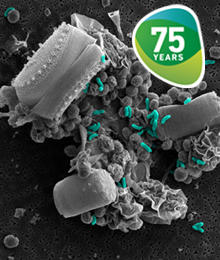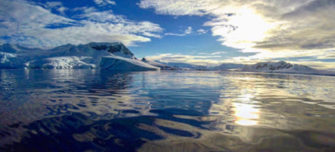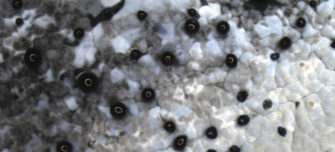Microbes and where to find them

Microbes play a crucial role in our lives. In fact, we couldn’t live without them but they could live without us. They are involved in many processes and are found in multiple environments, some of which are extreme. Thanks to their versatility, microbes can be put to work in many ways: making life-saving drugs, in the manufacture of biofuels, cleaning up pollution, and producing/processing food and drink; and as such, have a huge impact on our climate.
In addition to this, the natural world can provide us with a huge diversity of products, which have been utilised for everything from medicine to pesticides.
Microbiologists are involved in addressing challenges that vary from urgent problems demanding immediate solutions, such as new and emerging diseases, through to long-term issues, like antimicrobial drug resistance, food security, and environmental sustainability. Therefore, understanding where to find microbes and how we can use them to help create novel products and processes is important.
Why does understanding where microbes can be found matter to microbiology?
Microbiology is a pioneering discipline. Therefore, understanding how a variety of micro-organisms, and their wide-ranging roles, can have a huge the impact on our climate and the production of novel therapeutics which can help treat infections and disease.
We will explore three key areas which are helping us to develop a better understanding of microbes and where to find them below. Click on each content hub to learn more about microbes found in extreme environments, the role of microbes in climate change and recycling and the novel products being made from microbes.
-
Microbes at the extremes
Extremophiles are organisms that display optimal growth in environmental conditions which are considered extreme. Over the years, scientists have been able to prove that microbial life has great flexibility when it comes to surviving extreme environments. From Martian habitats, to the deep dark ocean, salt lakes, coastal salterns and ancient salt crystals – microbial life exists.
-
The role of microbes in climate change and recycling
Microbes play key roles in nutrient cycling, biodegradation/biodeterioration, climate change, food spoilage, the cause and control of disease, and biotechnology. We will explore why microbes play an important role in climate change, and how thanks to their versatility, microbes can be put to work in many ways.
-
Novel products from microbes
Micro-organisms have fascinating lifestyles, and many of those that live in the natural environment carry out beneficial or detrimental functions depending on the situation in which they find themselves. We will explore how the natural world has provided us with a huge diversity of products, which have been utilised for everything from medicine to pesticides.
Image credits:
Vibrio vulnificus incorporated into synthetic marine snow. Cameron BainesKatherine Duncan
Amy Apprill
Emily Addington





